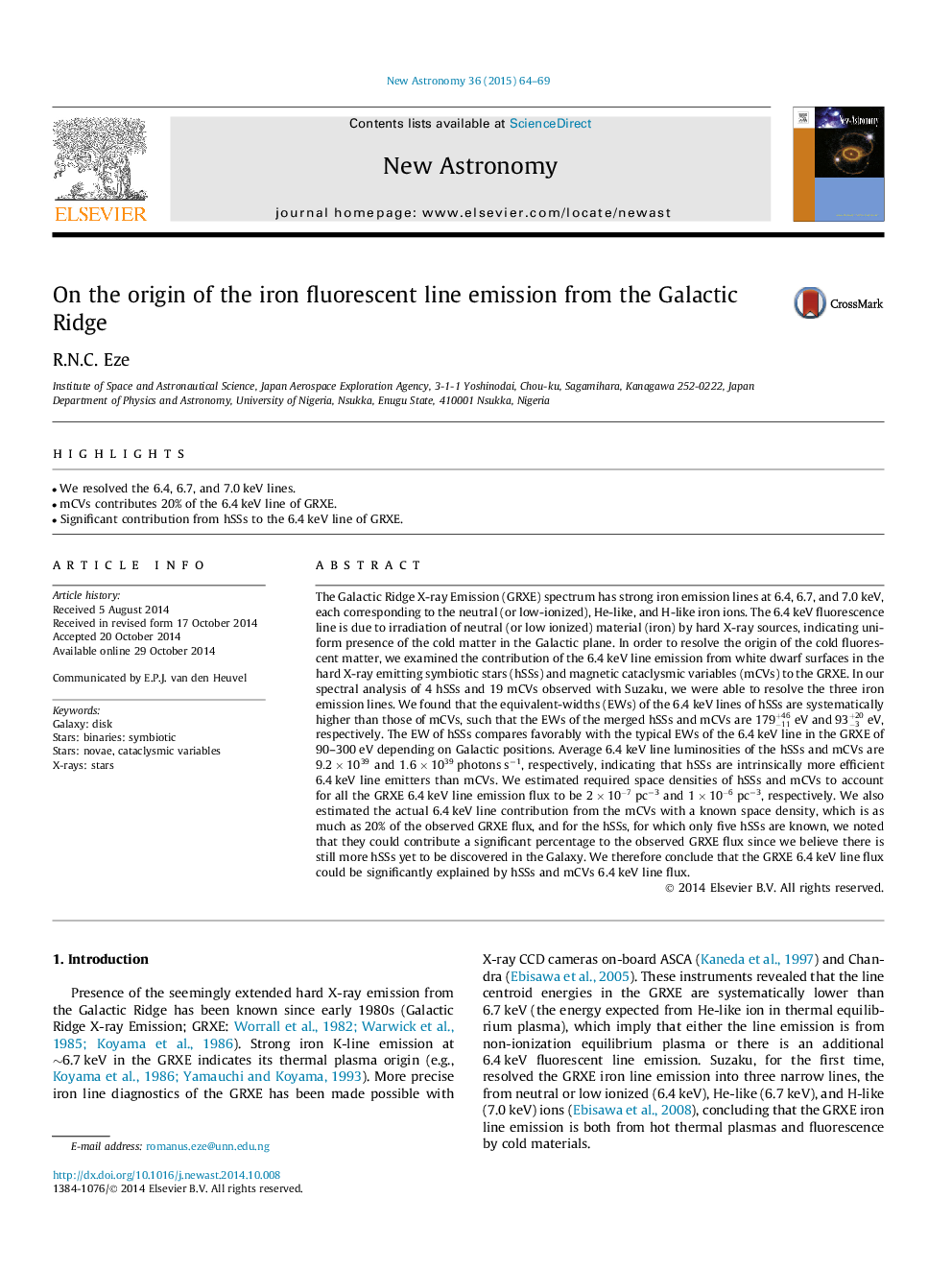| کد مقاله | کد نشریه | سال انتشار | مقاله انگلیسی | نسخه تمام متن |
|---|---|---|---|---|
| 1778882 | 1523742 | 2015 | 6 صفحه PDF | دانلود رایگان |
• We resolved the 6.4, 6.7, and 7.0 keV lines.
• mCVs contributes 20% of the 6.4 keV line of GRXE.
• Significant contribution from hSSs to the 6.4 keV line of GRXE.
The Galactic Ridge X-ray Emission (GRXE) spectrum has strong iron emission lines at 6.4, 6.7, and 7.0 keV, each corresponding to the neutral (or low-ionized), He-like, and H-like iron ions. The 6.4 keV fluorescence line is due to irradiation of neutral (or low ionized) material (iron) by hard X-ray sources, indicating uniform presence of the cold matter in the Galactic plane. In order to resolve the origin of the cold fluorescent matter, we examined the contribution of the 6.4 keV line emission from white dwarf surfaces in the hard X-ray emitting symbiotic stars (hSSs) and magnetic cataclysmic variables (mCVs) to the GRXE. In our spectral analysis of 4 hSSs and 19 mCVs observed with Suzaku, we were able to resolve the three iron emission lines. We found that the equivalent-widths (EWs) of the 6.4 keV lines of hSSs are systematically higher than those of mCVs, such that the EWs of the merged hSSs and mCVs are 179-11+46 eV and 93-3+20 eV, respectively. The EW of hSSs compares favorably with the typical EWs of the 6.4 keV line in the GRXE of 90–300 eV depending on Galactic positions. Average 6.4 keV line luminosities of the hSSs and mCVs are 9.2×10399.2×1039 and 1.6×10391.6×1039 photons s−1, respectively, indicating that hSSs are intrinsically more efficient 6.4 keV line emitters than mCVs. We estimated required space densities of hSSs and mCVs to account for all the GRXE 6.4 keV line emission flux to be 2×10-72×10-7 pc−3 and 1×10-61×10-6 pc−3, respectively. We also estimated the actual 6.4 keV line contribution from the mCVs with a known space density, which is as much as 20% of the observed GRXE flux, and for the hSSs, for which only five hSSs are known, we noted that they could contribute a significant percentage to the observed GRXE flux since we believe there is still more hSSs yet to be discovered in the Galaxy. We therefore conclude that the GRXE 6.4 keV line flux could be significantly explained by hSSs and mCVs 6.4 keV line flux.
Journal: New Astronomy - Volume 36, April 2015, Pages 64–69
